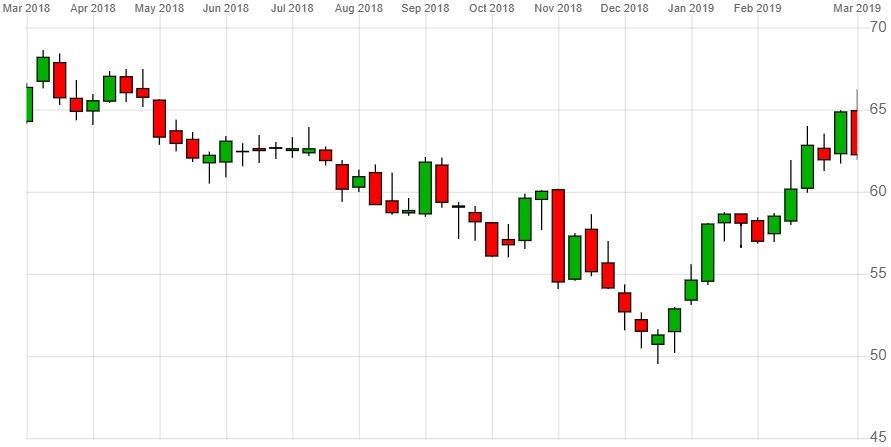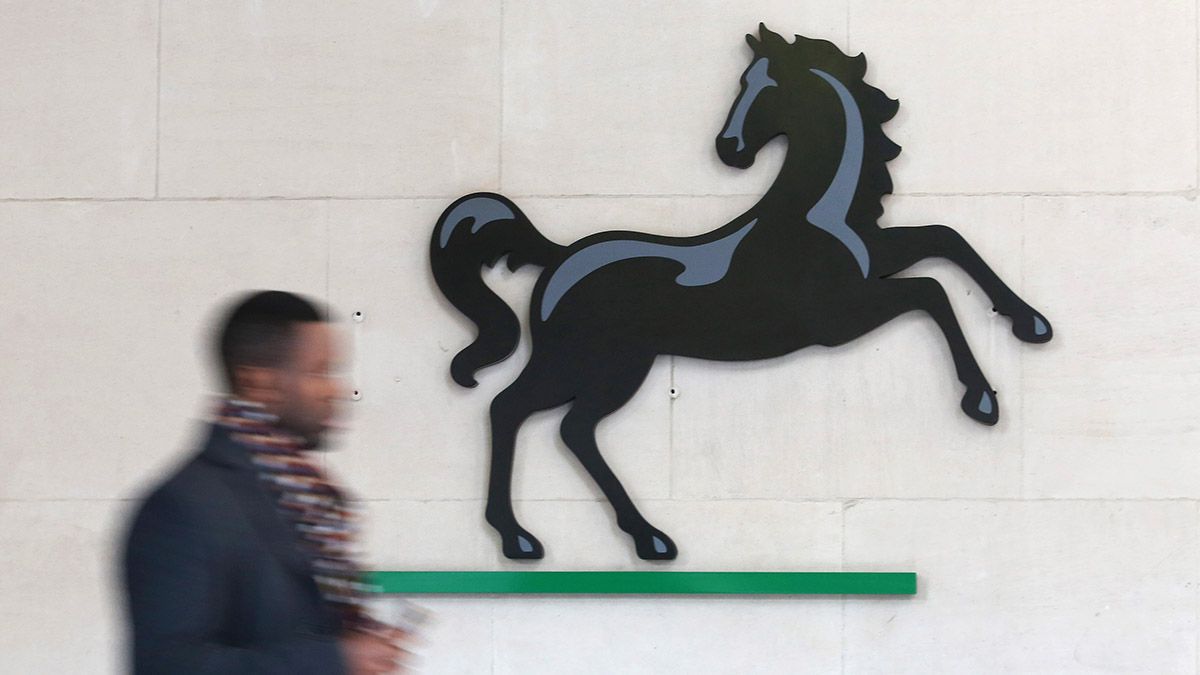Lloyds Banking Group [LLOY] investors couldn’t have had a better start to the year. In its full-year earnings announcement on 20 February, the lender said it would hike the full-year dividend by some 6%, and set the value of its upcoming share buyback programme at £1.75bn. It was the cherry on top for existing shareholders, who had at that time seen the value of the stock climb 17% since the start of 2019.
As March draws to a close, momentum seems to have dissipated however. The stock continued to climb following the earnings announcement, rising a further 7% by 19 March. But those particular gains were short-lived, with the stock falling 4.8% the following week. Are investors having second thoughts about the bank’s potential for returns?
Lloyds tied to banking industry’s cyclical fate
Bank stocks are cyclical. Their fate is intrinsically tied to macroeconomic ebbs and flows, which is true for Lloyds, whose business is completely localised in the UK and revolves almost entirely around consumer and corporate lending.
The current outlook for Britain’s economy is far from rosy: KPMG expects post-Brexit Britain to grow 1.2% in 2019, down from its previous estimate of 1.6% – that is, if a deal with the EU is reached. Unlike HSBC or Barclays, Lloyds does not have the kind of internationally-focused capital markets business that could provide relief to margins in case loans to consumers and small businesses start to sour.
1.2%
KPMG's prediction for the UK's post-Brexit economy growth in 2019
Sure, the lender is making an ambitious foray into wealth management, targeting one million customers through a joint-venture with Schroders – but that’s still only a blueprint. At a Morgan Stanley event in mid-March, CEO Antonio Horta-Osorio touted a rebalancing of Lloyds’ loan-book in a more sustainable direction, but the bank’s bread-and-butter remain mortgages, credit cards and car finance. All products intrinsically linked to households’ ability to repay – and consumer debt, particularly of the unsecured kind, has long been a concern for British regulators.
| Market cap | £43.89bn |
| PE ratio (TTM) | 11.21 |
| EPS (TTM) | 5.50 |
| Dividend payout ratio | 56.73% |
Lloyds stock vitals, Yahoo finance, as at 26 March 2019
Further market volatility priced into earnings risk
It is possible, then, that the market may be pricing in the risk of constraint on Lloyds’ future earnings at some point in the future, capping the stock’s forward P/E ratio at around 11. But such a discount would fly in the face of most analysts’ forecasts: the consensus share price target is more than 75p, according to 19 analysts polled by Yahoo Finance – an upside of 21% from current levels. Most rate the stock a “buy”. Even Goldman Sachs, whose forecast is among the most negative, upgraded the stock from “sell” to “buy”, lifting target price from 55p to 66p. And it did so on 12 March, as the Brexit crisis kicked into full gear.
The general opinion among analysts seems to be that Lloyds has its banking business in order, and that should be enough to sustain growth. Return on tangible equity grew from around 8% in 2017 to 11% in 2018, and Lloyds plans to achieve 14-15% by this year. “Exciting Lloyds is not. But income growth and a chunky dividend… are not to be sniffed at,” commentators at Hargreaves Lansdown wrote after the 20 February results. “Performance is being driven by more loans to customers, at higher margins and with lower operating costs - in essence doing simple banking well … Horta-Osorio's plan for the next three years calls for more of the same.”
“Exciting Lloyds is not. But income growth and a chunky dividend… are not to be sniffed at” - Commentators at Hargreaves Lansdown
Morningstar puts the PEG ratio for Lloyds’ stock at 0.80 – indicating a discount relative to earnings growth. But for some investors, a juicy 5%-and-rising yield may not be enough to overlook the risk to the stocks’ value, should pressure on margins force the bank to halt share buybacks or tighten up the dividend purse.
Continue reading for FREE
- Includes free newsletter updates, unsubscribe anytime. Privacy policy





